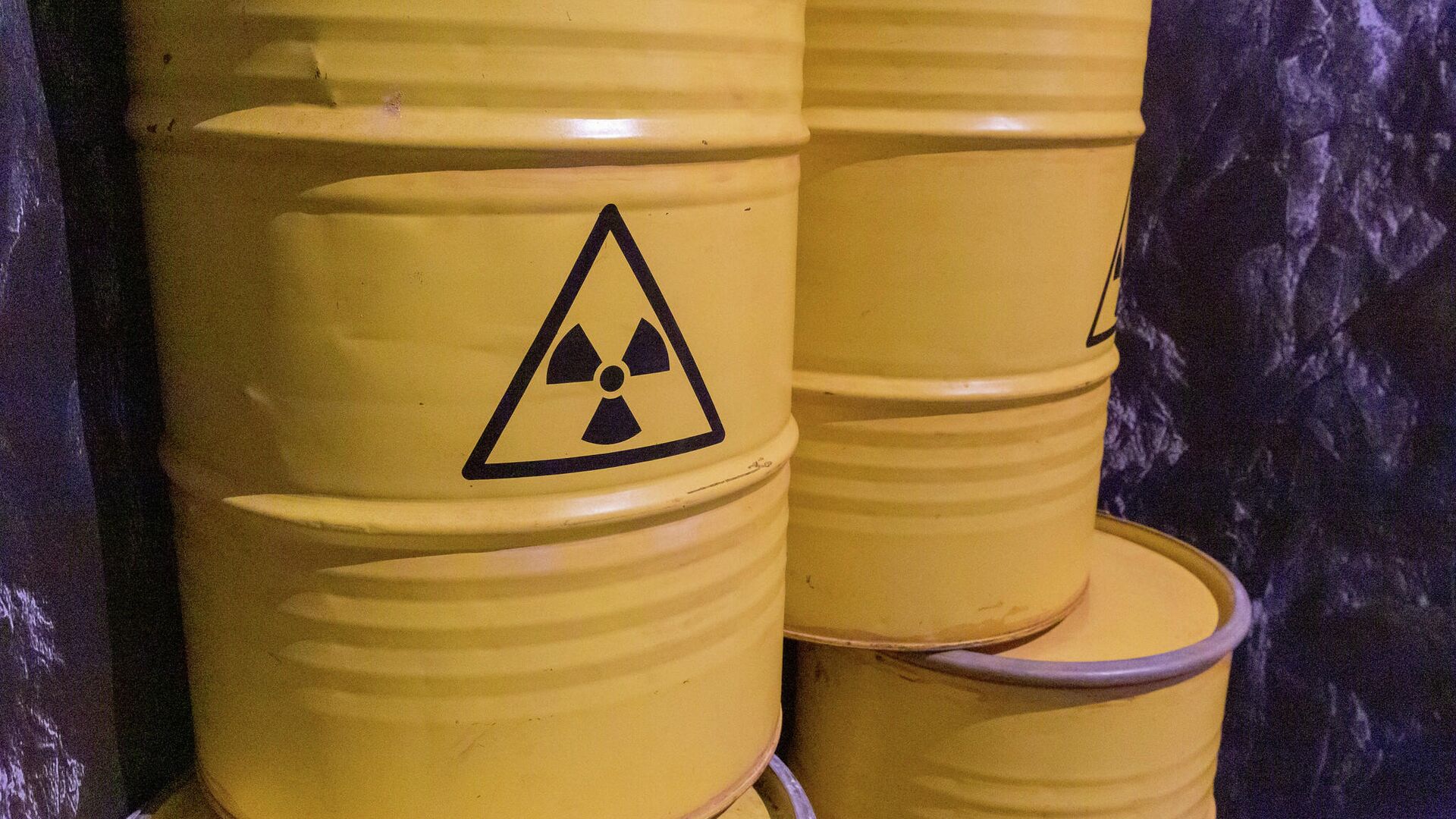No Radiation Reported After Liquid Leak Found at Waste Plant for US Nuclear Weapons Manufacturing
00:06 GMT 12.04.2022 (Updated: 13:29 GMT 06.08.2022)
Subscribe
A New Mexico waste storage facility has reported that no radioactive contamination has been found after liquid was found in the bottom of a storage container over the weekend.
On Saturday evening, workers at the Waste Isolation Pilot Plant in southeastern New Mexico evacuated after finding liquid at the bottom of a drum of nuclear waste. While the liquid was radioactive, no leak was found outside the container, including in the air or on any person, according to the Carlsbad Current Argus.
The emergency protocols were deactivated at 11 p.m. local time, per an update from WIPP officials.
"There is no risk of radiological release and there is no risk to the public or the environment," the facility said in a news release. “The activation occurred as a result of an abnormal event during routine waste handling at the WIPP site, located 26 miles east of Carlsbad, New Mexico.”
The massive facility is operated by the US Department of Energy and stores radioactive waste produced by the manufacturing of the US’ nuclear arsenal, which includes thousands of nuclear warheads made from uranium and plutonium. Through natural processes, radioactive elements like uranium and plutonium decay into isotopes of smaller elements as they emit alpha radiation, and those decay products can be just as radioactive, if not more so, than the material they came from. Eventually they will decay until they reach a stable isotope, but that process can take tens of thousands of years.
However, the waste stored in Carlsbad isn’t just uranium metal, it’s also materials used in the manufacturing process, such as lab coats, gloves, tools and other items contaminated by the radioactive materials.
That’s why the US decided to store this waste deep in the thick salt deposits of the Delaware basin, where it can be safely kept for up to 10,000 years. Two other similar deep geological repositories exist in Germany, at Morsleben and Schacht Asse. Washington originally intended to use Yucca Mountain in Nevada to store all its nuclear waste, including from power plants, but construction of the site was canceled in 2009 amid widespread local resistance to the plan due to radioactive leakage concerns and Native American objections to desecration of a site sacred to them.
As a result of the Yucca Mountain cancellation, US nuclear power plants have been forced to store their own spent nuclear fuel in above-ground facilities. One large facility in Washington state, known as the Hanford Site, was responsible for refining most of the plutonium used in some 65,000 nuclear weapons built by the US since 1945. Today, it is a nuclear waste storage site, but has become infamous for radioactive leaks.
However, WIPP hasn’t been without its problems: several leaks in 2014, including one large accident, raised doubts about whether the Delaware Basin would be a safe alternative to Yucca Mountain, even though the area has been geologically stable for 200 million years and the highly compressed salt has a unique attribute enabling it to seal cracks that form. The accident shuttered the facility for three years and has cost roughly $486 million to fix.
Last month, the Government Accountability Office (GAO) auditing agency warned in a report about the high risk of runaway costs associated with fixing the site’s safety issues.



